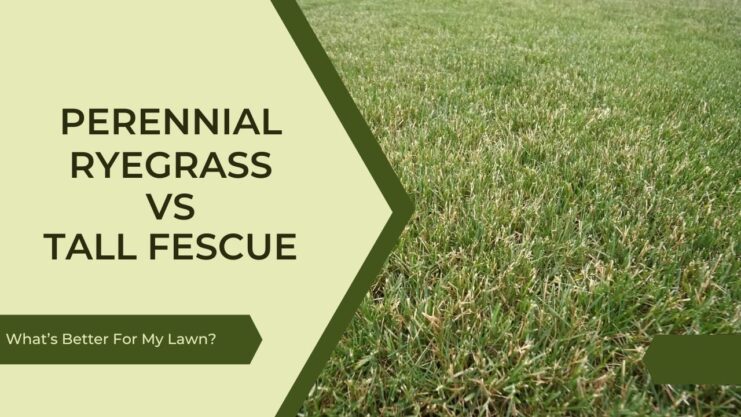Are you in the market for a lawn makeover, or perhaps just starting from scratch with a fresh plot of dirt? If so, you might find yourself standing in the grass seed aisle, feeling overwhelmed by the myriad options.
Two popular choices among green thumbs and landscape enthusiasts are Perennial Ryegrass and Tall Fescue. Both sound promising, but which one is the best fit for your yard?
Let’s dive into the world of grasses and explore the attributes, benefits, and potential challenges of these two resilient and attractive types.
Overview of Your Options
Perennial Ryegrass
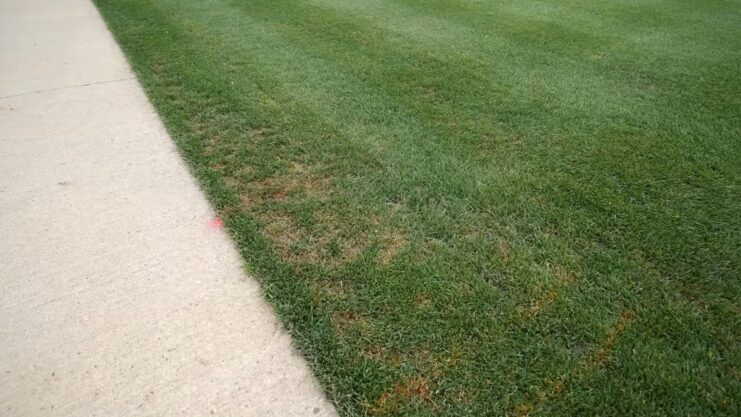
Perennial Ryegrass is a cool-season grass that is widely appreciated for its quick germination rate and appealing aesthetic. With its fine, shiny leaves that grow in bunches, this grass type can add an elegant, velvety look to your lawn.
Perennial Ryegrass thrives in cooler climates, so if you’re located in the northern regions of the U.S or coastal areas, this could be an ideal choice. Its rapid growth rate makes it an excellent option for overseeding, where it’s often used to improve the look of existing lawns during cooler months.
However, as enticing as it sounds, Perennial Ryegrass does come with its challenges. It requires regular watering and maintenance, and it might struggle in hot, dry conditions. If you’re in an area with water restrictions or prolonged summer heat, this may not be the best choice for you.
Tall Fescue
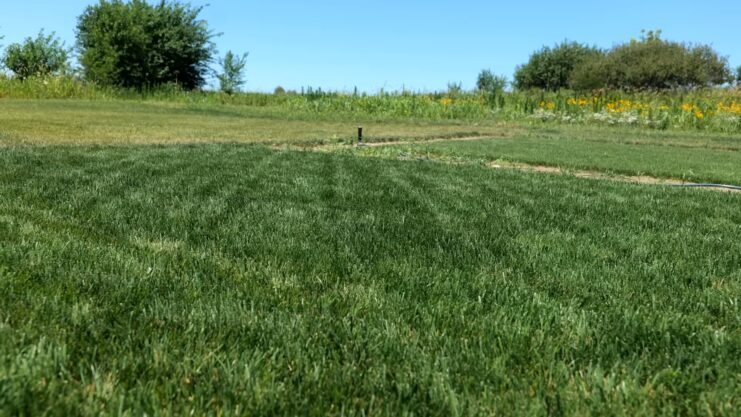
On the other hand, Tall Fescue is a hardy grass type that’s become a favorite among homeowners, especially those living in transitional zones. This grass is known for its deep roots, which can reach up to 3 feet, allowing it to withstand heat and drought conditions better than its counterparts.
Tall Fescue showcases a thick, dense growth with a coarser texture, giving your lawn a lush, green carpet look. It’s also more resistant to diseases and pests, making it a low-maintenance option for those who don’t have the time or resources for frequent lawn care.
However, it’s not without its drawbacks. Tall Fescue can struggle in extreme cold, and its growth might be less uniform than other grass types. Also, due to its deep root system, it may be challenging to establish initially.
The Comparative Showdown: Perennial Ryegrass vs. Tall Fescue
Climate Tolerance
As cool-season grasses, both Perennial Ryegrass and Tall Fescue are adapted to thrive in cooler temperatures. However, Tall Fescue exhibits superior heat and drought tolerance thanks to its deep root system. If you live in an area with hot summers and mild winters, Tall Fescue might be your best bet.
Maintenance Requirements
If you’re willing to put in the work for a picture-perfect lawn, Perennial Ryegrass could be your pick. This grass type requires consistent mowing, watering, and fertilization to maintain its luxurious look. On the other hand, Tall Fescue is a fantastic low-maintenance choice. Its disease and pest resistance make it a preferred option for busy homeowners or those seeking a more eco-friendly lawn.
In your quest for a perfect lawn, another common issue you might encounter is unwanted fungi growth, for which we’ve created a comprehensive guide on dealing with mushrooms in your lawn effectively.
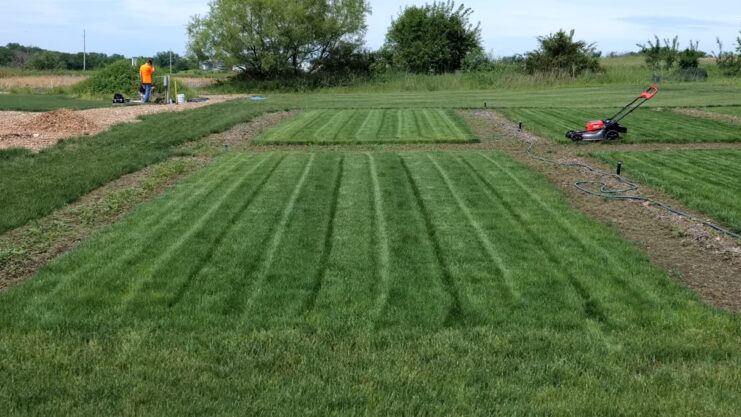
Aesthetic Appeal
Perennial Ryegrass, with its fine-bladed texture and shiny leaves, offers a refined, velvety appearance. Its fast growth rate ensures quick coverage, leading to an attractive lawn in no time. Tall Fescue, however, offers a dense, carpet-like look with its coarse texture. While some find this appealing, others might prefer the finer texture of Perennial Ryegrass.
Durability and Traffic Tolerance
Both Perennial Ryegrass and Tall Fescue are known for their resilience. Perennial Ryegrass, with its quick growth and recovery, can handle moderate foot traffic, making it ideal for home lawns and sports fields. Tall Fescue, with its deep-rooting nature, can withstand high traffic and wear, making it a fantastic choice for active families or multi-use green spaces.
Which One Is Better For My Lawn?
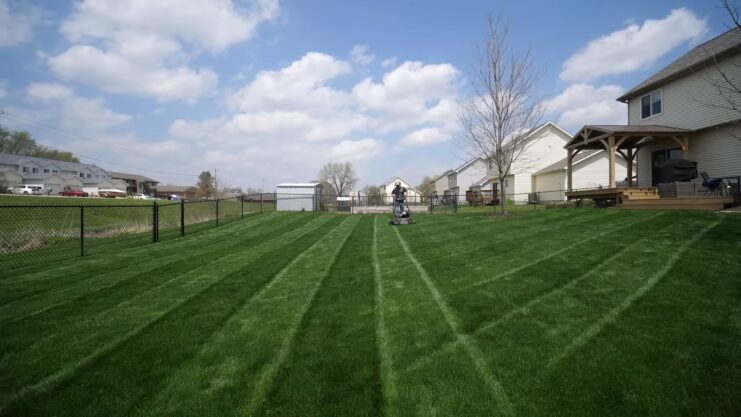
The answer to this question largely depends on your specific needs, preferences, and the environmental conditions of your area. Here are some considerations to help you make your decision:
Consider Your Climate
If you live in a cooler region with mild summers, Perennial Ryegrass might serve you well. Its rapid growth and regrowth make it a smart choice for quick lawn establishment or overseeding in these areas. On the other hand, for homeowners in transitional climates with hotter summers, Tall Fescue, with its superior heat and drought resistance, could be the perfect pick.
Evaluate Your Maintenance Capacity
Assess how much time, effort, and resources you can allocate to lawn care. If you’re prepared for regular watering, mowing, and fertilizing, you might opt for Perennial Ryegrass. However, if you’re looking for a low-maintenance, resilient grass that can resist diseases and pests, Tall Fescue should be your go-to choice.
Think About Lawn Usage
Do you have children or pets that will be using the lawn regularly? Or maybe you’re planning to host outdoor events? If your lawn will see a lot of foot traffic, the durability and resilience of Tall Fescue could be beneficial. However, if your lawn is more for show than function, the fine, shiny leaves of Perennial Ryegrass might be more appealing.
Additional Factors to Consider
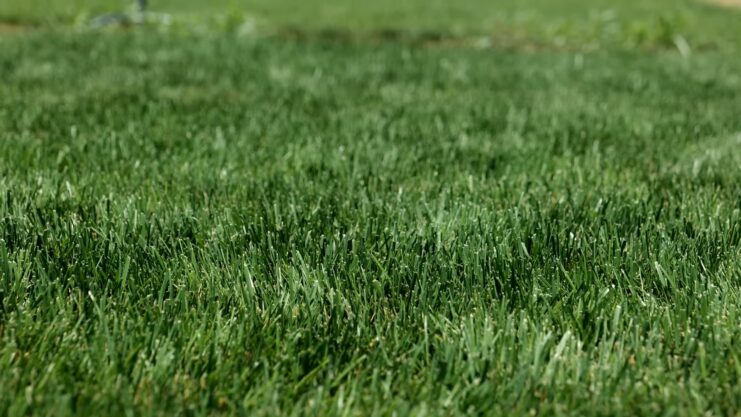
Soil Conditions
The type of soil in your yard is another crucial factor when deciding between Perennial Ryegrass and Tall Fescue. Perennial Ryegrass prefers well-draining soils and may struggle in heavy clay or overly sandy soils. It’s also sensitive to soil pH and thrives best in slightly acidic to neutral pH levels (6.0 to 7.0).
Tall Fescue, on the other hand, is less picky about its soil. Thanks to its deep roots, it can adapt to a variety of soil types, including clay and sandy soils. It also tolerates a wider pH range, from slightly acidic to slightly alkaline (5.5 to 7.5).
Before sowing any grass seed, it’s always a good idea to test your soil. This will help you understand its pH level and composition, and you can make necessary amendments to create the ideal environment for your chosen grass type.
Planting Time
When to plant is another key factor. For Perennial Ryegrass, the best planting time is in early fall when temperatures start to cool. This allows the grass to establish before winter. If you miss the fall window, early spring is the second-best option.
Tall Fescue also prefers fall planting, as it gives the grass the best chance to develop a strong root system before summer heat arrives. Spring planting is possible, but it may require more watering and care to ensure survival through the hotter months.
Disease and Pest Resistance
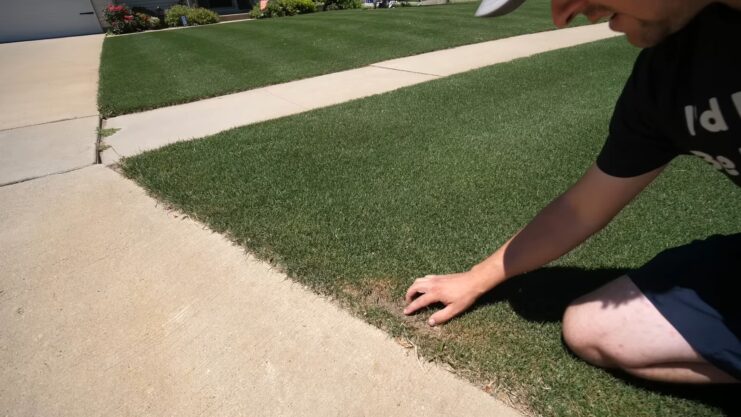
We mentioned earlier that Tall Fescue has better overall resistance to diseases and pests, but let’s expand on this point. Tall Fescue is highly resistant to a variety of lawn diseases, such as brown patches and dollar spots. It’s also more resistant to common lawn pests like white grubs and billbugs.
Perennial Ryegrass has been bred for improved disease resistance, but it can still be susceptible to some lawn diseases like rust and leaf spots. As for pests, it may attract stem and leaf-eating insects, which can be controlled with proper lawn care practices and sometimes the use of pesticides.
Water Requirements
Watering requirements for these grass types can vary significantly. Perennial Ryegrass, while lush and attractive, requires more frequent watering, especially during dry periods. Without adequate moisture, it can quickly turn brown and go dormant.
Tall Fescue’s deep root system allows it to access moisture well below the soil surface. This makes it more drought-tolerant and reduces the frequency and volume of watering needed. However, during prolonged dry periods, even Tall Fescue will require supplemental watering to stay green and healthy.
Mixed Lawns: Can You Have the Best of Both Worlds?
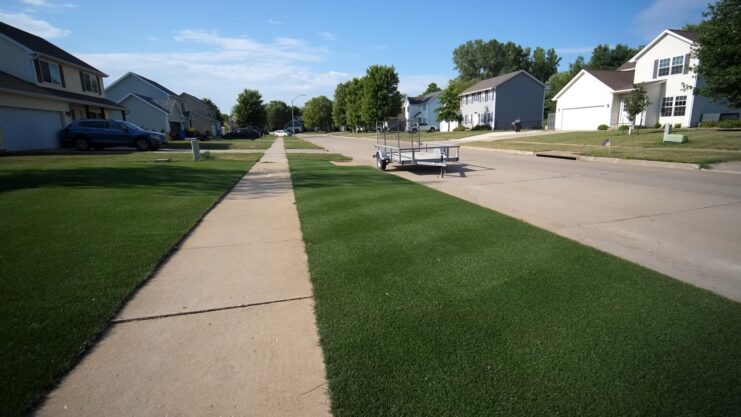
If you’re still torn between Perennial Ryegrass and Tall Fescue, you might consider mixing the two. Many homeowners and turf professionals create seed blends or overseed with a different type to gain the benefits of both types of grass.
Perennial Ryegrass can be overseeded into Tall Fescue lawns to improve winter color and to help with erosion control on slopes. Likewise, adding Tall Fescue to a Perennial Ryegrass lawn can enhance its heat and drought tolerance. Keep in mind that each grass type will still have its own needs, and achieving a harmonious mix can require some experimentation and fine-tuning.
The Final Verdict
In the grand scheme of Perennial Ryegrass vs. Tall Fescue, there’s no one-size-fits-all answer. The best grass type for your lawn depends on your personal needs, the specific environmental conditions, and your maintenance preferences.
Perennial Ryegrass, with its quick germination and aesthetic appeal, is perfect for those willing to put in the effort for a stunning, plush lawn. In contrast, Tall Fescue, with its low maintenance requirements and resilience, is a dream for those seeking a hardy yet attractive lawn.
So, the next time you find yourself standing in the grass seed aisle, perplexed by the choices, take a moment to consider your specific needs and circumstances. Whether you choose Perennial Ryegrass or Tall Fescue, understanding their characteristics will ensure you make an informed choice, leading to a lawn you’ll love and enjoy for years to come.

